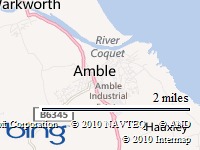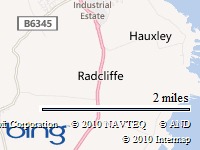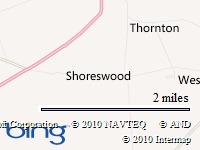Location, location, location
I have rapidly discovered that having a good understanding of the proximity of strange place names is essential to interpreting records and deriving theories about potential relationships worthy of further investigation. This page is going to be devoted to some of the key places that feature in my research.
As I track my ancestors through the industrial age I see that their migration has been driven predominantly by the availability of work in the mining and fishing industries. Beyond that they spring from the fields and seem to have moved around at the whim of landowners. It is interesting to see that in the period that is traceable through the census they are rarely in the same place from one headcount to the next. It must have been quite a challenge to “up sticks” and transport a family with a dozen children from one mining village to another at the far end of the county, or beyond. No wonder that the few photos of matriarchs of that period show well worn and rather stern looking women.
Amble, Northumberland, England
The port of Amble is my home town. During my childhood there was a population of a little over 4000 so we knew many of the families living there. The town grew around the harbour with coal transport and fishing among the major industries. Amble had railway links to local collieries to transport the coal to the loading staiths at the harbour. (Referred to as “steeths” in the local dialect.)
My father also grew up in Amble and my mother was raised a couple of miles away in Radcliffe. I grew up thinking that this was where my roots were, so there have been a lot of surprises as my genealogy research has progressed. There was never much discussion during my childhood of previous generations having come from further afield, though I do have vague memories of Stobswood and Choppington having been mentioned. I also remember being told that the Webb line originated in Cornwall, a theory which I have not yet managed to prove.
I visit Amble regularly and in between visits I keep up to date with current day life in the town by reading The Ambler.
Radcliffe, Northumberland, England
The pit village of Radcliffe is where my mother was born and raised. Since my granda Webb was a miner, my grandparents spent most of their married lives in Radcliffe, which is also where he grew up. They left it reluctantly when the village was demolished in 1971 to make way for opencast mining. Even the luxury of having running water in the house after their forced move to Amble was not enough to make my granny accept the change. Families in Radcliffe colliery housing had to carry their water in buckets (“pails”) from the other side of the street and perform their ablutions in a tin bath in front of the living room fire. The toilet (“netty”) was also across the road. This was an earth closet with an open midden. I still remember the smell and the weekly visits of the midden man who came to shovel out the contents. The distance between Amble and Radcliffe was less than a mile, so in the days of our childhood my best friend and I used to hop on our bikes and ride off together to visit our respective grandparents in Radcliffe. An activity that would never be allowed in this day and age. Some of my Crackett, Tweddle, Smith, Gair and Smailes relatives have also lived in Radcliffe.
Shoreswood, Northumberland, England
One of the first ancestral birth certificates I acquired was for my great grandfather Leonard Cracket born in 1847 at the New Winning, Shoreswood, Northumberland. He is the patriarch in the family picture in the banner of my blog. I did not need to use the GRO to acquire this certificate as a cousin of my father still held the original documents for their grandparents. Shoreswood was clearly a mining community in the mid 1800s, and for the rest of his life each move for great granda Len was to another mining community in the county. Although it is only 40 miles from Amble I was not familiar with Shoreswood, so one of my first exploratory adventures in 2010 was to go and take a look. Today there are just a handful of houses, some of which may well have been the original buildings.
Among other places that I plan to write a short paragraph on the location and my connections are: (listed in no particular order)
- Choppington, Northumberland, England
- Kyloe, Northumberland, England
- Lowick, Northumberland, England
- Coldstream, Berwickshire
- Cullercoats, Northumberland, England
- Hartburn, Northumberland, England
- Aberdeenshire, Scotland(list of villages to be added)
- Oldham, Lancashire, England
- Longbenton, Northumberland, England
- Walker, Northumberland, England
- Great Lumley, Durham, England
- Norham, Northumberland, England
- Elsdon, Northumberland, England
- Mere Whitwood, Yorkshire, England
- Newburn, Northumberland, England
- Stobswood, Northumberland, England
- Seghill, Northumberland, England
- Seaton Deleval, Northumberland, England
- Willington, Northumberland England





Liked this idea of “places”. Gives the reader an idea of the places that you are seeking ancestors. Just discovered your blog and will be following it. Note you mention Oldham. I was looking at the Chadderton Cemetary there last eveing. Searching for Meek and Milne ancestors of a friend. They ran the workhouse there in the 1870’s. Didn’t see any Meek or Milne names in your list. Most of my ancestors are from the Midlands….Leicestershire, Staffordshire and Warwickshire. I am in Alberta, Canada and if you have questions about that part of the world, let me know. Louise
Welcome Louise,
No Meeks or Milnes I’m afraid. My Oldham interest is because of a brick wall I have with my great grandfather Robert Webb. Some of his descendants live in your part of the world. I have cousins in Edmonton.
Hi,
I too live in Edmonton. Only Webb’s I know are Cal and Vicki Webb. Any connection?
My aunt who was a Webb married a Canadian with surname Ash. Their grandchildren and great grandchildren are in the Edmonton area. None of my Webbs there.